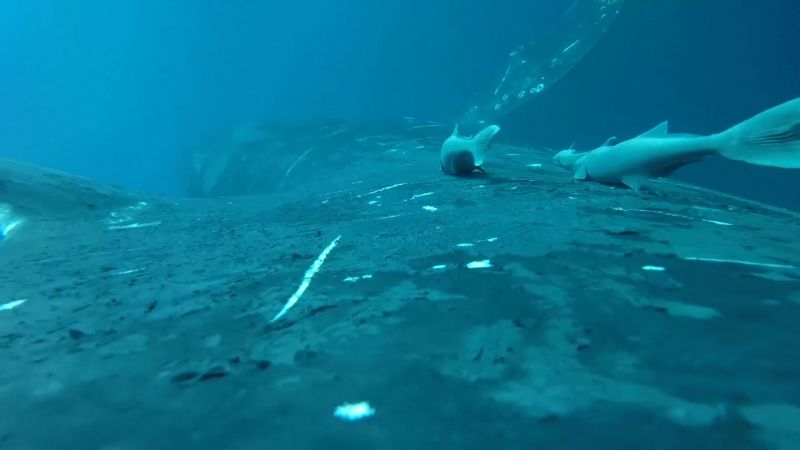Scientists have recently captured astonishing footage of remoras, commonly known as sucker fish, engaging in a unique behavior known as “whale-surfing.” This phenomenon was observed off the coast of Queensland, Australia, where researchers tracked humpback whales during their annual migration from Antarctic waters. The footage reveals groups of remoras skillfully detaching from their whale hosts just before the whales breach the surface, only to return moments later with remarkable timing.
The footage was recorded by marine scientist Olaf Meynecke from the Whales and Climate Research Program at Griffith University. Initially intended to study whale behavior, Meynecke’s project involved placing suction-cup cameras on humpback whales. However, the video feeds often showcased dozens of remoras photobombing the cameras while riding along with their massive hosts. They travel in groups, sometimes numbering up to 50, and exhibit synchronized movements that resemble a high-speed game of chicken.
The remoras utilize an adhesive plate on their heads, creating a vacuum seal that allows them to cling securely to the whales. This hitchhiking lifestyle provides the remoras with a steady food source, as they feed on dead skin flakes and parasites like sea lice. Meynecke noted that the remoras displayed impressive instincts, letting go of the whale just before it breached the surface and returning to the same spot shortly after.
Despite their seemingly beneficial relationship with humpbacks, Meynecke’s observations suggest the whales may find their remora passengers bothersome. He noted instances of whales breaching repeatedly, seemingly to dislodge the remoras. “We’ve had individuals with high numbers of these remoras, and they were continually breaching,” he stated. “It appeared that they’re trying to just get rid of some of these remoras.”
Understanding the Journey of Humpback Whales and Remoras
Australia’s so-called humpback highway serves as a migratory corridor for approximately 40,000 humpback whales. Each year, these majestic creatures travel close to the Australian eastern coast, migrating over a distance of 10,000 km (6,000 miles) between their icy Antarctic feeding grounds and the warmer waters off Queensland. The presence of remoras during this journey raises questions about their own migratory patterns and survival tactics.
Remoras typically live for about two years, leading to uncertainty regarding their full journey aboard the whales. “I suspect that the majority would probably leave at some point, maybe in temperate waters, but then where do they go?” Meynecke pondered. “Do they find other species that they can then use as a host and wait until the humpback whales have come back?”
In the absence of humpback whales, remoras are known to latch onto other large marine animals, such as manta rays and dolphins, or even unsuspecting scuba divers. Meynecke humorously remarked, “Much to the annoyance of the divers, of course. They’re not easy to get rid of.”
The footage recorded during this research not only sheds light on the unique behavior of remoras but also highlights the complex relationships within marine ecosystems. As scientists continue to study these interactions, they may uncover further insights into the fascinating world of ocean life.





































































